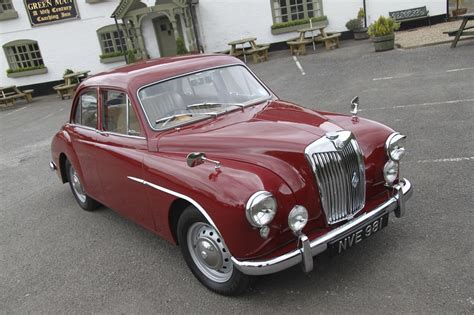Discover the founding, expansion, innovation, impact of World War I, merger with Auto Union, and legacy of DKW. Explore the history of this iconic automotive brand.
Founding of DKW
Contents
DKW was a German car and motorcycle brand that was founded in 1916 by Jørgen Skafte Rasmussen. His initial company, Rasmussen & Ernst, produced steam fittings before moving on to the development and production of small two-stroke engines. In 1919, the company’s name was changed to DKW, derived from the initial letters of Rasmussen’s name and the German word for ‘motorcycle’. This marked the official founding of the DKW brand, which would go on to become one of the most successful and influential names in the automotive industry.
DKW became known for its innovative two-stroke engine designs, which offered high power output in a compact and lightweight package. This technological advantage allowed DKW to achieve significant success in motorcycle racing, establishing the brand as a leader in performance and engineering. The success of DKW motorcycles laid the foundation for the company’s expansion into the production of automobiles, setting the stage for a new era in the history of the brand.
By the mid-1920s, DKW had become the largest motorcycle manufacturer in the world, with a reputation for reliability, performance, and innovative design. The company’s success in the motorcycle market provided the financial stability and industry recognition necessary to fund its expansion into the production of automobiles. This marked the beginning of a new chapter in the history of DKW, one that would see the brand emerge as a major player in the global automotive market.
In 1928, DKW introduced its first passenger car, the P15, which featured a two-stroke engine and front-wheel drive—a groundbreaking innovation that set the standard for compact cars for decades to come. The P15 was followed by a series of successful and influential models, establishing DKW as a pioneer in automotive engineering and design. The founding of DKW marked the beginning of a legacy that would shape the automotive industry and inspire generations of engineers, designers, and enthusiasts.
Expansion and Innovation
After the founding of DKW in 1916, the company experienced tremendous growth and innovation in the years to come. One of the key factors that contributed to the expansion of the company was its innovative approach to two-stroke engine technology. DKW’s engineers constantly worked on improving the efficiency and performance of these engines, which allowed the company to produce a wide range of vehicles, including motorcycles and small cars.
DKW’s expansion was not limited to the production of vehicles. The company also ventured into new markets, both domestically and internationally. With the growing demand for affordable and reliable transportation, DKW’s innovative designs and engineering prowess made the company a dominant force in the automotive industry.
During this period of expansion, DKW also focused on improving its manufacturing processes. The company invested in modern production facilities and adopted new techniques to streamline its operations. This allowed DKW to increase its output and meet the growing demand for its vehicles.
Furthermore, DKW’s commitment to innovation extended beyond the technical aspects of its products. The company also invested in marketing and advertising, creating a strong brand identity that resonated with consumers. This approach helped DKW to stay ahead of its competitors and continue its expansion into new markets.
In conclusion, the expansion and innovation of DKW during this period laid the foundation for the company’s future success. By constantly pushing the boundaries of engineering and design, DKW established itself as a leader in the automotive industry and set the stage for further growth and development.
Impact of World War I
The impact of World War I on the DKW car company was significant. The war brought about a halt in production as the company’s resources were diverted towards supporting the war effort. Many of the company’s skilled workers were also conscripted, leading to a shortage of manpower. The demand for automobiles also decreased during this time, as resources were prioritized for the war. This led to a decline in sales and profitability for DKW.
Furthermore, the war disrupted the international supply chain, making it difficult for DKW to source raw materials and components for its vehicles. This forced the company to innovate and find alternative sources for its production needs. Despite these challenges, DKW managed to adapt and survive during the war years.
After the war, DKW faced the additional challenge of rebuilding its infrastructure and reestablishing its supply chains. The economic upheaval caused by the war also affected consumer purchasing power, further impacting the company’s sales. However, the experience of navigating through these difficult times ultimately shaped DKW’s resilience and ability to overcome adversity.
In response to the impact of World War I, DKW also diversified its product offerings to include smaller, more affordable vehicles that could cater to the changing market conditions. This strategic shift allowed the company to tap into new customer segments and regain its foothold in the automobile market.
Merger with Auto Union
History of DKW Car Company
In 1932, DKW merged with three other companies – Horch, Audi, and Wanderer – to form Auto Union, which eventually became Audi as we know it today. The merger was a strategic move to consolidate resources and expertise in the face of economic challenges and competition from other automobile manufacturers.
The merger brought together the engineering and design talents of the various companies, leading to the development of innovative and high-quality vehicles. Auto Union’s focus on innovation and performance in the years following the merger helped establish it as a leading player in the automotive industry.
One of the key developments after the merger was the introduction of the first front-wheel-drive car with a transversely mounted engine, the DKW F1, which revolutionized the automotive industry. This innovative design laid the foundation for modern front-wheel-drive vehicles and cemented Auto Union’s reputation as a pioneer in automotive engineering.
The merger with Auto Union not only expanded the reach and influence of DKW but also played a crucial role in shaping the future of the automobile industry. The combined expertise and resources of the four companies laid the groundwork for the success and legacy of the Auto Union and, ultimately, Audi.
Legacy of DKW
DKW’s legacy in the automotive industry is one marked by innovation, influence, and endurance. Despite the company’s eventual absorption into the larger Auto Union and later, the Volkswagen Group, DKW’s impact can still be felt today in the design and technology of modern vehicles.
One of the most enduring aspects of DKW’s legacy is its pioneering work in two-stroke engine technology. DKW was at the forefront of developing lightweight, efficient, and powerful two-stroke engines that were utilized in a wide range of vehicles, including motorcycles and small cars.
Furthermore, DKW’s legacy can be seen in the company’s success in motorsport, particularly in motorcycle racing. The company’s motorcycles were highly successful on the racing circuit, contributing to DKW’s reputation for performance and reliability.
Finally, DKW’s legacy lives on in the influence it had on subsequent vehicle designs and engineering. The innovative spirit of DKW can be seen in the continued emphasis on lightweight materials, fuel efficiency, and high-performance engines in today’s automotive industry.













